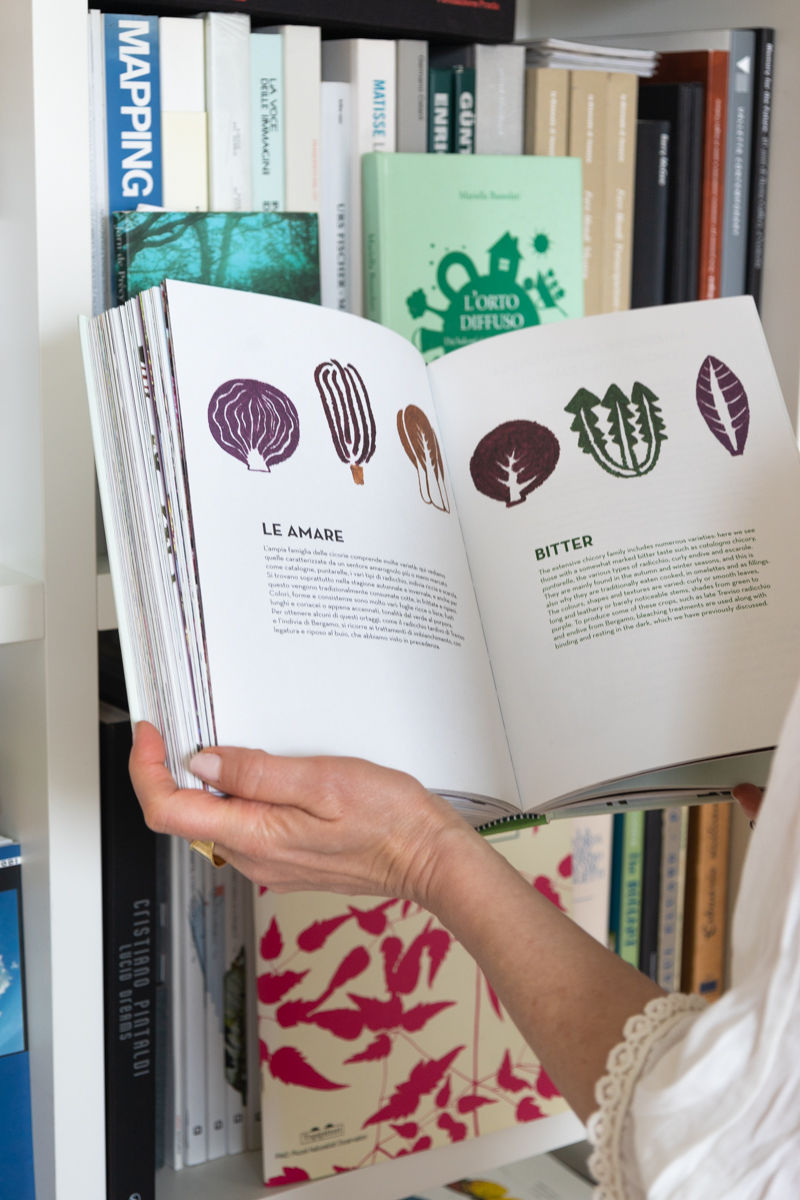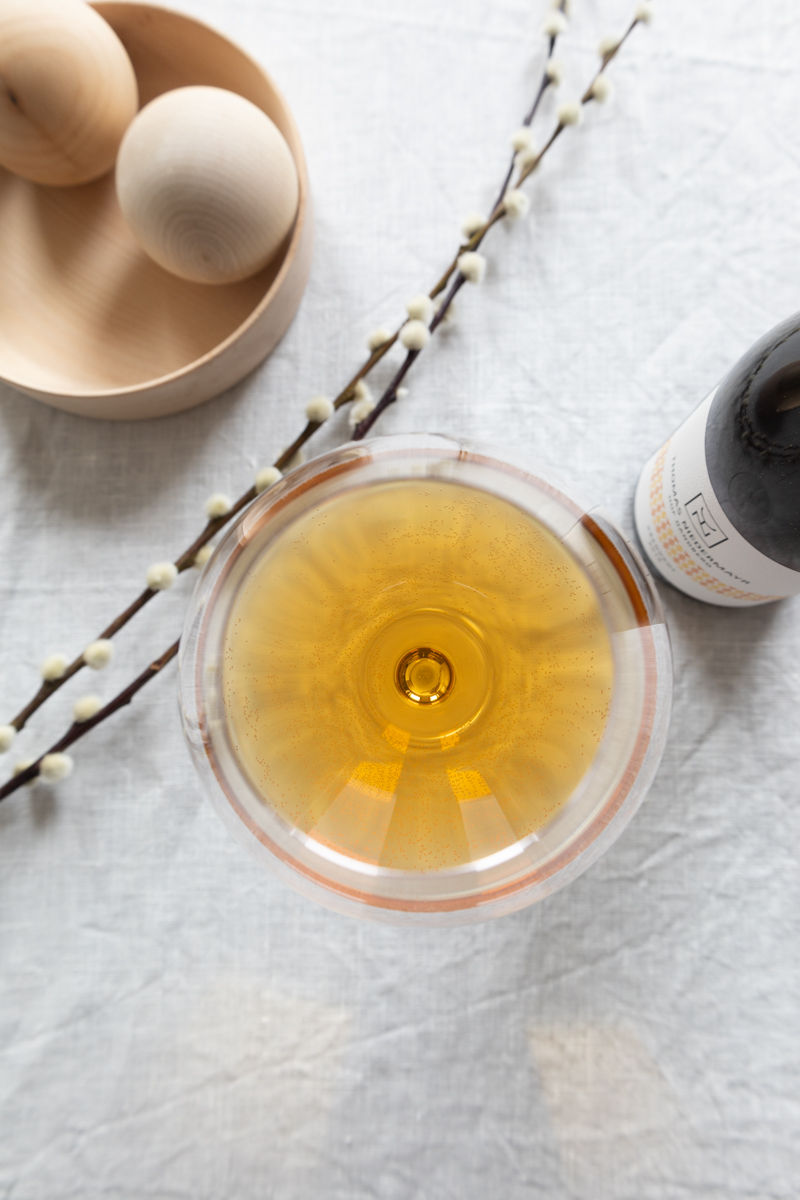INTERIOR WITH Abendrot | and Scraps of Italy
- Laura Riolfatto
- 18 mar 2023
- Tempo di lettura: 5 min
wine and book setting #20
edit by Laura Riolfatto

A wine, a book and a dish.
A crossroad of emotions and intertwinements: I was reading Scraps of Italy 2 by Valentina Raffaelli, I had recently visited the Thomas Niedermayr canteen, and I was thinking of trying a pairing with a wine I consider not so easy, obtained from the PIWI Souveignier gris vine. So the fusion among content -the book, the culinary adventure, and the story of the wine- led to an intertwining in which Casuziei from Ampezzo, based on red beetroot, took over.


What can a wine and a book have in common? In this case, it is the vision of the author Valentina Raffaelli, culinary designer and researcher, and the production philosophy of Thomas Niedermayer, young and visionary wine maker from Alto Adige.
The words respect for nature and sustainability describe their work well, with an ongoing research aimed at finding balance between agricultural production and men, to define new and ever more responsible action models. Today being sustainable, word that we hear often and is often abused, perhaps means finding social, environmental and economic systems able to avoid the collapse of our eco-system, while trying to respond to our growing needs with attention, respect and care, thinking about the future generations that will come.



Abendrot is the wine protagonist of this story, with red tones, of a warm and intense color that recalls Baltic amber, clear, lively and shiny; in fact its name in German means reverberation. The perfume is intense, strongly fruity with notes of quince jam, plums, almonds and a final note of resin, lightly spicy, with scents that recall cardamom. The taste is full, juicy and fresh, with a delicate tannic structure, it fills the palate and has a long persistence in the mouth.
It is a white wine macerated on the skins obtained from a rare variety of vine, the Souvignier gris, a PIWI that is cultivated by Thomas Niedermayr in San Michele di Appiano in Alto Adige since 2006.
It was born as an experimental vine in 1983 in the Freiburg Research Institute, curated by the biologist Norbert Becker, it is a variety with bunches of a copper and rust color, with enchanting shades of purple and violet. The acronym PIWI derives from the German Pilzwiderstandsfähig, which means vines resistant to fungus. In fact, the WIPI vines are strongly resistant to fungus diseases and thus allow a significant reduction of pesticides and synthetic substances, compared to the traditional vines, they are stronger and resist well to pathogen organisms, they adapt well to extreme climatic conditions and grow in impervious areas. For this reason, Thomas’s company has been growing them for over 30 years, for the company these vines represent a healthy way to relate with the soil, the territory and the final consumer. A real bet for the wine, agricultural and human environment. Their forward-thinking vision goes beyond the organic production, it is a conscious and counter-cultural philosophy that produces natural and elegant wines, which are honest, non-conformist and symbolic at the same time, as they well represent the territory.


The book ‘Scraps of Italy 2’ is a culinary research, a green adventure, a journey through Italy made by the author Valentina Raffaelli and the illustrator Luca Boscardin, from North to South, collecting and cataloguing testimonies, recipes and gastronomic and green traditions unknown to many.
The vast concept of scrap is intended from more points of view, and it is fascinating to understand that it is not only focused on what we throw away, but also -and mainly- on what we do not consider. Also the things we do not consider are conceptually seen as scraps, and this intriguing thought made me curious. Italy is a big botanical garden, rich in biodiversity, vegetables of all kinds, tubers, roots, rhizomes, herbs, leaves, sprouts…foods that have crossed our history and our culinary culture of peasant origin, in which nothing must be thrown away. How many greens are we unaware of? Many. How many vegetables do we avoid because we consider them ugly, lumpy and unattractive, because they do not correspond to the beauty canons imposed by the productive chain? Too many. This illuminating exploration tells us about illogical and dangerous dynamics, where the current production and distribution system of fruit and veg does not allow free choices, but with great ability imposes predefined standards, homologated and standardized products to consumers. Fruit and veg designed in an impeccable way that does not foresee an ethical and sustainable agricultural vision, it suffices to observe a vegetable garden to understand how certain imposed canons are completely misleading and harmful for the natural ecosystem.

Let’s now arrive to the other protagonist of this pairing, red beetroot, belonging to the Chenopodioideae family, which enchants for its intense red due to betanin, the coloring substance rich in benefits.
The beetroot is mainly composed of water, but is rich in precious minerals and vitamins. Its iron-like flavor is unmistakable, with its slight sweet tendency and the final acid note, it has a strong taste, characteristic and unmistakable. It is widely used in the mountains, especially in the Dolomites, where it is often the key ingredient of many delicious dishes.
From the book I got the idea of a recipe traditional of the Venetian Dolomites, precisely from Cortina d’Ampezzo, which brings us back to the presence of the Habsburg dynasty in this area. The Casunziei are a fresh type of egg pasta stuffed with beetroot, which I served with melted butter, baby spinach leaves, poppy seeds and a beetroot cream.
It may seem a brave pairing, but it matched well with ABENDROT and had greatly balanced flavors.
For the softness and roundness of the macerated wine I also found another recipe from the book, typical from Veneto, which sees as protagonist bitter chicories, a huge passion of mine. I love winter especially for the wide variety of chicories we can eat, with colorful and shaded leaves, at the same time sweet and slightly bitter. The "radici de campo fumegà" (sautéed wild roots) are a simple and fun recipe, in Italian ‘suffocated radicchios’, made in the pan. I sautéed them with crunchy speck, added a little bit of wine and left cooking for ten minutes.
A great contrast of flavors, between the bitterness of the chicory and the softness of the wine, which made the pairing very pleasant. ABENDROT is a structured wine, with 14°, definitely alcoholic, but thanks to its freshness it does not result heavy in the mouth and paired with simple traditional dishes based on greens with an aromatic and intense taste, it found a very good balance.


I find fascinating the pairing between wine and vegetables, thanks to this book I got a lot of inspiration, especially with greens, tubers, bulbs and leaves I had never really contemplated before, like celeriac, garlic and zucchini thallus, parsnips, scorzonera (or black oyster plant), tassel hyacinth… an explosion of biodiversity with which I look forward to experimenting in the kitchen.
In this specific case, there was a coherence of intents and an intertwining of thoughts between a natural wine, obtained from an experimental vine, and some recipes based on vegetables collected in a book that illustrates a research on agricultural production, sustainability, and illuminates us on the concept of scrap.




